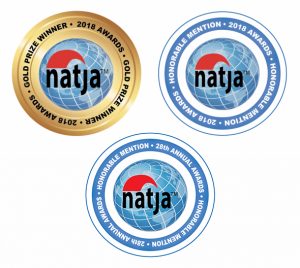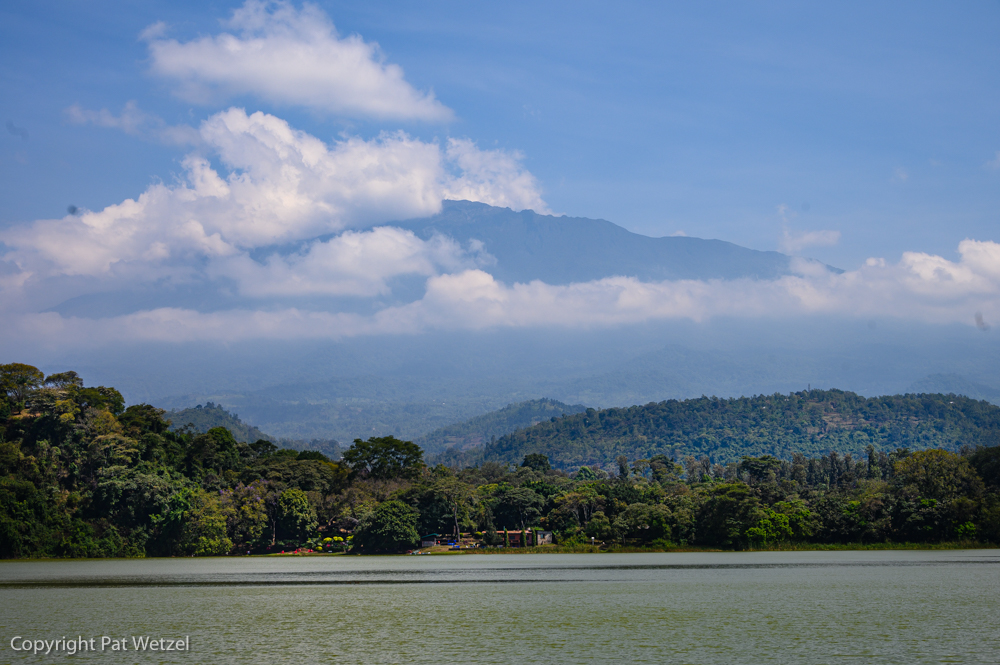
by Pat Wetzel | Oct 25, 2019 | Road Trip, The Story
Day 1 in Tanzania
I woke to a misty morning filled with the sounds of birds. I pulled back the mosquito netting that wrapped around the sleeping area and opened to drapes to a spectacular garden panorama.
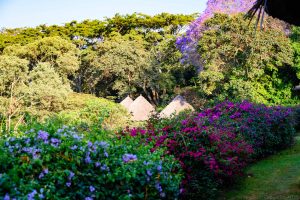
The morning view from my hut looks out on lush gardens and other huts nestled into the jungle.
Jacaranda, flowering shrubs and numerous trees flourish on the landscape. In the distance, Lake Duluti shimmers.
Each hut has a spectacular view and mine is breathtaking. I shrug off the fatigue of travel and consider breakfast up at the lodge.
The Serena Lodge in Arusha is a collection of beautifully appointed huts, nestled on acres of manicured grounds. The property has a vaguely British feel to it, with dark woods and white starched tablecloths in the dining room, and floral prints in the bar.
Breakfast is a daily buffet that includes fresh mango, passion and other juices; eggs prepared to your liking; breads and sweets; fresh fruit; cheese and meat; baked sweet potatoes and more.
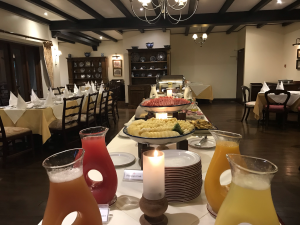
The breakfast buffet
And freshly dripped African coffee.
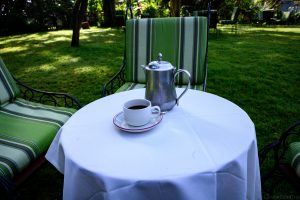
Rich, lush African coffee on the grassy patio
This is coffee as it should be. Each sip is rich with the essence of roasted beans. There is a body to the beverage–not a thickness but a sense of aromatic presence that translates into an almost savory, lingering flavor.
It is simply delicious. I could become a coffee drinker again.
Africa is a different place. It is simultaneously exotic, ordinary, lush, and lean. I was currently experiencing lush, although just a few miles outside the gated property, was lean.
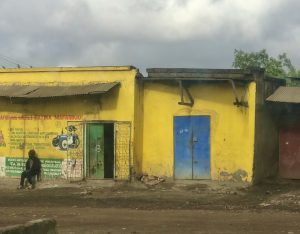
Local life is often very rudimentary
This disconnect, from the tourist experience to the local reality is one that I will witness throughout our trip. But people everywhere seem kind and helpful. The pace is relaxed.
Back at the hotel, echoes of British monarchy seemed to linger, in the language, in the food, and in the interior architecture of the Serena.
Which got me to wondering about the history of Tanzania.
A Short History of Tanzania: The Portuguese, The Germans and the British
The region that would become Tanzania was known as Tanganyika throughout its colonial history. It would not be until April 26 of 1964 that Tanganyika and Zanzibar would be united and the name Tanzania (a blend of Tanganyika an Zanzibar) became official.
Early western influence dates back to Vasco da Gama’s 1498 visit to the region. In 1505 the Portuguese capture of Zanzibar established trade.
In the early 18th century the Portuguese ceded control to Omani Sultan Seyyid Said who, with the assistance of the Omani Arabs, conquered Zanzibar in 1840 and made it the capital of the slave trade.
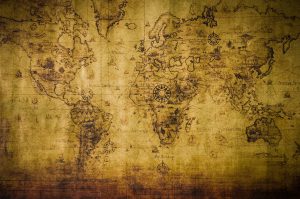
Originally discovered by the Portuguese, Tanzania would also interest the German and British.
German exploration in the mid nineteen century led to the discovery of Kilimanjaro by Johannes Rebman and brought railroad transportation and roads to the area. In 1885 the German East Africa Company took over the region, bringing railroads and roads.
The German defeat in World War I and the terms of the Treaty of Versailles then ceded the territory to the British.
World War II brought more western influence to the region. One hundred thousand natives fought for the Allied forces in Somaia, Abyssinia, Madagascar and in Burma. Food became an important export for Tanganyika during this period.
After the war, Tanganyika became a U.N. Trust Territory. But the gradual transition to independence was begun. The colonial officer David Gordon Hines was instrumental in helping to develop farming cooperatives that encouraged trade.
And in December of 1961 Tanganyika became independent from the British and all European rule.
Hiking Lake Duluti
Lake Duluti is a lake in Tengeru, on the eastern edge of the eastern branch of the Great Rift Valley. It was most likely formed when a volcano collapsed, leaving behind a small caldera that filled with water.
The lake lies just beyond the gates of the Arusha Serena. A hike seemed the perfect anecdote to over 30 hours of transcontinental travel.
A guide is required, as is signing in at the entry. Beyond that, the jungle envelopes you. You are now in its element and any notions of separation vanish. Animals move about; monkeys jump through the trees. Beautiful purple Jacaranda trees are interspersed along the lakeshore.
And in the distance, 14,980 foot tall Meru rises, overlooking it all.
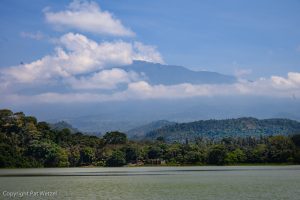
Meru looms over Lake Duluti
Meru isn’t as tall as nearby Kilimanjaro (19,341) but it is a more difficult and technical climb. While Kilimanjaro can be summited by most people in very good shape, Meru presents about 4,000 feet of technical climbing plus a 1,500 foot climb over nearly featureless granite.
But climbing is not on my agenda. A simple walk around Lake Duluti is.
Views from Lake Duluti
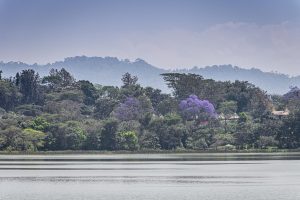
A view across Lake Duluti with purple flowering Jacaranda trees on the far shore
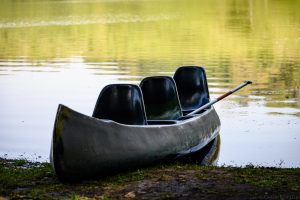
Canoe a trois
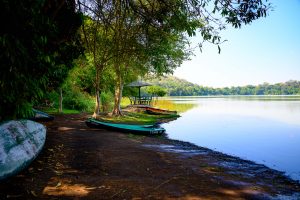
Looking down Lake Duluti
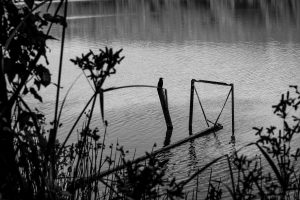
A bird resting lakeside
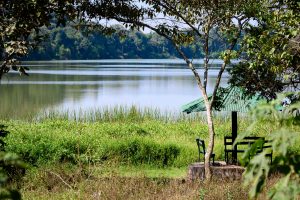
A seating area at the lake
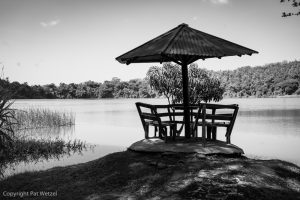
Picnic at Duluti anyone?
The hike around Lake Duluti is an easy one. After a day and a half of travel, this was exactly what I needed to start settling into Africa.
That and a glass of wine. As the evening approached, I approached the beautiful wood bar nestled in the corner of a room set with groupings of sofas and chairs, some in a floral print reminiscent of English chintz.
“Wine?” I inquired.
A nod and a smile from the bartender.
“What kind?” I asked, not sure how detailed to make my inquiry. Savignon Blanc, Chenin Blanc, Chardonnay?
“South African,” the bartender responded.
But of course.
And a well bodied and balanced Chenin blanc accompanied me out to the grassy patio overlooking the property.
As the sun sets, the air cools and the cicadas chirp. A Chinese group gather around one table, playing a ukulele. An Australian couple sits without speaking.
The wind moves. Every tree has its own dance. And with my first day in Africa, I start to settle in at 4,300 feet in the lush jungle.
More Reading On My African Safari
An African Photo Safari With A Nikon Ambassador
Safari Clothes: Packing for Safari
An African Photo Safari: Photo Equipment Packing List
Visas and Vaccinations for Tanzania
Like This Post? Pin It!
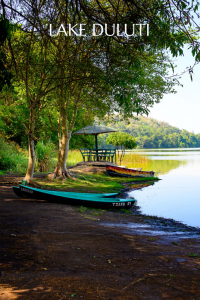
If you’re interested in learning more about photography (or cooking or film or any number of topics) check out MasterClass All-Access Pass for on-line excellence:
 [et_bloom_inline optin_id=”optin_10″]
[et_bloom_inline optin_id=”optin_10″]
What is #CancerRoadTrip and how did it come to be? Read this post to get the backstory!
Follow me on Twitter, Pinterest, Instagram, and at Anti-Cancer Club. Connect with me! I may need a place or two to stay along the way!
Follow my blog with Bloglovin
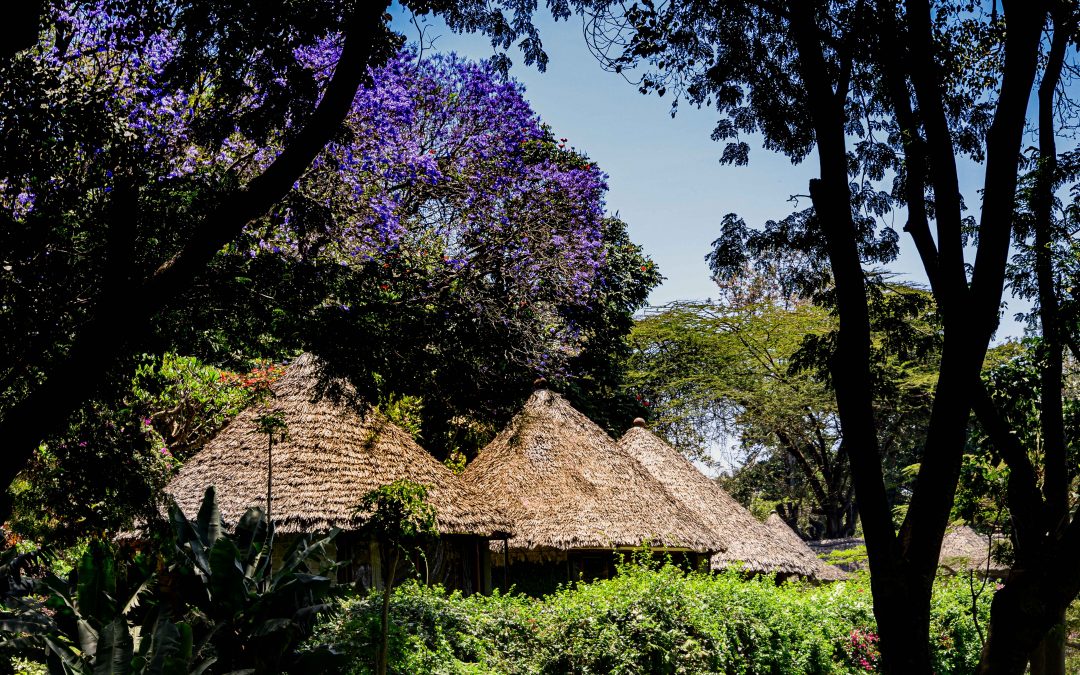
by Pat Wetzel | Oct 13, 2019 | Road Trip, The Story
An African photo safari with a Nikon Ambassador is both inspiring and humbling.
Kristi Odom is one of just 35 U.S. Nikon Ambassadors. The Ambassadors are selected by Nikon as some of the most influential photographers working today.
Kristi’s mission is to to:
“Show the beauty in the natural world and to connect people emotionally to wildlife. Also to inspire others to understand the power of photography and believe in themselves that they can make change.”
She has won over 60 international photography awards and her recent work has appeared in numerous places, including the Smithsonian. To say that I’m thrilled to be studying with someone of this calibre is an understatement.
I consider myself an advanced beginner when it comes to photography. And now I am about to embark on an African photo safari with 3 professional photographers.
Can anyone say out of my league?
I bought my first “real” camera just two years ago. It was a Nikon 5500 kit with two lenses. It sat in a travel bag by my side, ready to record my travels.
But I didn’t touch it for months.
Then one day on a Florida beach, I took some photos of sanderlings. The photos weren’t anything to write home about, but for me, at that stage of my experience, they opened my eyes to the potential of photography.

Sanderlings in Ft. Lauderdale, FL
And the idea that I could possibly create beautiful, and eventually, interesting images was born.
Now, two years later, I find myself stuck.
My beginner tricks are no longer working; my photographs lack a compelling message.
From a creative perspective, I can see images, but I can’t adequately express them. I need both technical knowledge and a more broad based education in what creates a compelling image.
Enter Kristi.
We met over a late breakfast on Canyon Road at the Teahouse in Santa Fe. She was in town for a visual storytelling class at Santa Fe Photo Workshops. (Yes, Nikon Ambassadors take classes, as well as giving talks, teaching and running trips like this one to Tanzania).
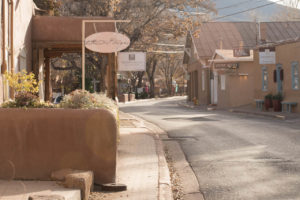
Canyon Road, Santa Fe
The prospect of visiting Tanzania was intriguing, but even more intriguing was a chance to study with Kristi. Her photos are captivating. And part of this trip included a year of one on one mentorship via Skype.
The chance to learn sold me. I was going to Tanzania.
Flight Path for An African Photo Safari
Getting to Tanzania meant thirty hours of travel for a total of 9,948 miles (each direction) in three legs: from Albuquerque to Atlanta; Atlanta to Amsterdam; and Amsterdam to Kilimanjaro.
Coming home, it was Kilimanjaro to Dar es Salaam, and then to Amsterdam, Atlanta and Albuquerque.
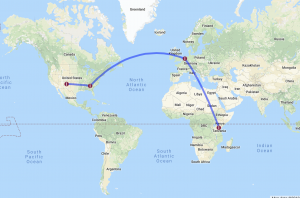
30 Hours To Tanzania
On the ground, our itinerary was equally ambitious, as we navigated parks, washboard dirt roads and wandering wildlife:
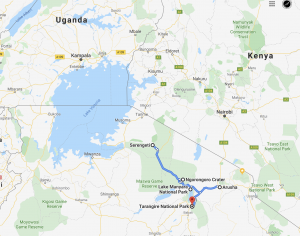
The travel route, over mostly unpaved, washboard roads that climbed thousands of feet, then dipped back down to vast savannas. Did I mention dust?
The Itinerary for a Tanzania Safari
I really had no idea what I was getting into (this is a theme that seems to repeat throughout my life and leads into the most interesting adventures).
Africa.
Ok, it would be fun to go to Africa.
A safari.
Why not?
So it was that I found myself in a rigorous schedule that started before daylight and often ended far after dark.
I am learning that photography trips can mean long days. But long days translate into photo opportunities that you’d otherwise miss. So, along with Kristi, our safari leader and Nikon Ambassador, and two other professional photographers, I set off for Tanzania.
Here is our itinerary:
Pre-Arrival, Two Days: I arrived late Saturday night. The following two days I hiked Lake Duluti and visited the foothills of Kilimanjaro.

A view across Lake Duluti
The formal safari itinerary:
African Photo Safari, Tanzania, Day 1: Arrival
African Photo Safari, Tanzania, Day 2: Arusha Cultural Heritage Center
The travelers–four of us including Kristi–met up for a morning of African art and history and an afternoon of education in the bar at the Arusha Serena Hotel.
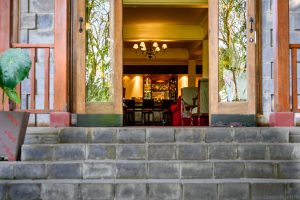
Entry to the bar at the Arusha Serena
African Photo Safari, Tanzania, Day 3: Arusha to Lake Manyara
This leg included a morning safari drive followed by one on one mentoring with Nikon Ambassador Kristi Odom while we stayed at the Lake Manyara Serena with spectacular views overlooking the lake.

Water buffalo at Lake Manyara
Click here for the Drive-By Gallery, a series of photos taken en route to Lake Manyara
Click here for photos and information on Lake Manyara.
African Photo Safari, Tanzania, Day 4: Lake Manyara to the Serengeti
A drive along an unpaved, washboard road up to the Ngorongoro Crater and then down into the Serengeti where we would spend two nights at the Serengeti Sopa Lodge. Our welcome to the Serengeti: A rather angry elephant that came right up to our vehicle!
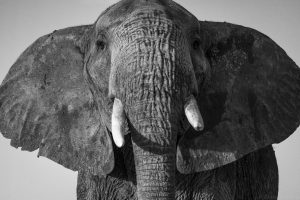
Welcome to the Serengeti!
Click here for a look at an amazing elephant family we encountered as we sped for the Serengeti.
African Photo Safari, Tanzania, Day 5 : Serengeti National Park
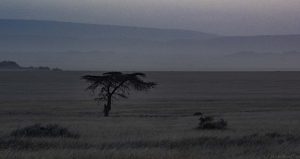
Evening falls on the Serengeti
African Photo Safari, Tanzania, Day 6: Serengeti National Park to the Ngorongoro Crater
We had a glimpse of the Crater from our trip to the Serengeti. This time it was a two night stay at the Sopa Lodge at the eastern edge of the Crater.
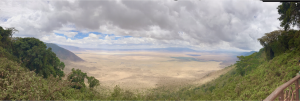
A panorama of Ngorongoro Crater
African Photo Safari, Tanzania, Day 7: Ngorongoro Crater
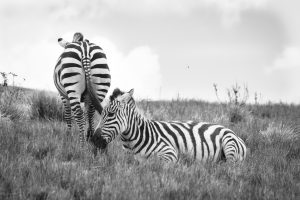
Black and white personified
African Photo Safari, Tanzania, Day 8: Ngorongoro Crater to Tarangire
We managed two game drives into this park before heading back to Kilimanjaro Airport.
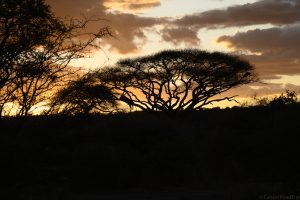
Lion in the tree at sunset
African Photo Safari, Tanzania, Day 9: Tarangire to Kilimanjaro Airport for an evening departure.
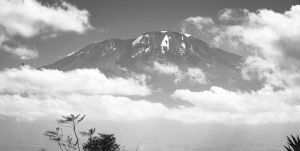
Kilimanjaro
I’ll be sharing the details of the safari in an upcoming series of posts over the next few weeks. I took about 10,000 photos and have a bit of editing to do! Stay tuned for some great adventures!
Traveling to Tanzania
I landed around 8 p.m. tired from 30 hours of transcontinental travel.
The entire plane disembarked into the Customs area, segregated into two groups: those with visas, and those without. Both lines were long and slow. Definitely get your visa ahead of time.
Just past customs, drivers await.
My driver, “Gift” (an English translation from his Swahili name), led me out into a dense and cool evening. The dirt parking lot was filled with safari vehicles. We set off, on the left hand side of the road, for the 45 minute trip to the Arusha Serena Hotel.
Saturday night in Africa is much like Saturday night anywhere. Along the road, in the dark, people meet and mingle. Occasional music and voices drifted through the open vehicle window.
I dozed, exhausted from travel. Even the swaying of the vehicle, bumping over rutted unpaved roads was not enough to wake me.
Until we arrived at the lodge.
Shimmering in the dark were massive trees, up lit by landscape lights. Piles of flowers spilled onto the grass. Chirping sounds suspended in silence filled the night.
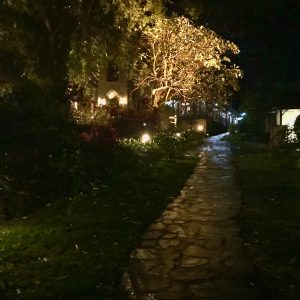
Trees glowed in the dark as I arrived at the Arusha Serena Lodge.
The kind staff led me to my hut, a beautiful room overlooking the flowering grounds and in the distance, Lake Duluti.
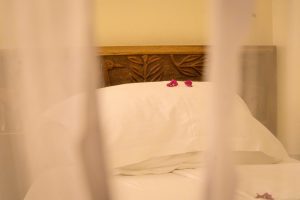
Flower petals scattered on the bed, behind a mosquito net
On the bed were scattered flower petals. And around the beds, a mosquito net was pulled shut. I quickly showered, parted the netting carefully, closing it behind me, and went to bed.
I had landed in Africa.
More Reading on An African Photo Safari
Safari Clothes: Packing for Safari
An African Photo Safari: Photo Equipment Packing List
Visas and Vaccinations for Tanzania
Like This Post? Pin It!
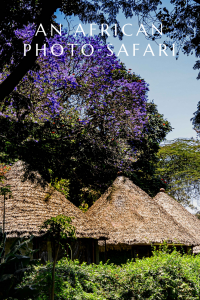
If you’re interested in learning more about photography (or cooking or film or any number of topics) check out MasterClass All-Access Pass for on-line excellence:

[et_bloom_inline optin_id=”optin_10″]
What is #CancerRoadTrip and how did it come to be? Read this post to get the backstory!
Follow me on Twitter, Pinterest, Instagram, and at Anti-Cancer Club. Connect with me! I may need a place or two to stay along the way!
Follow my blog with Bloglovin














 [et_bloom_inline optin_id=”optin_10″]
[et_bloom_inline optin_id=”optin_10″]

















